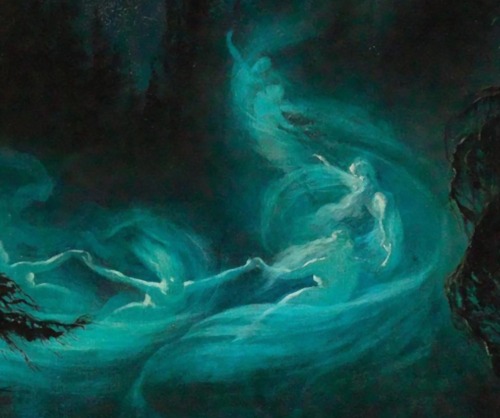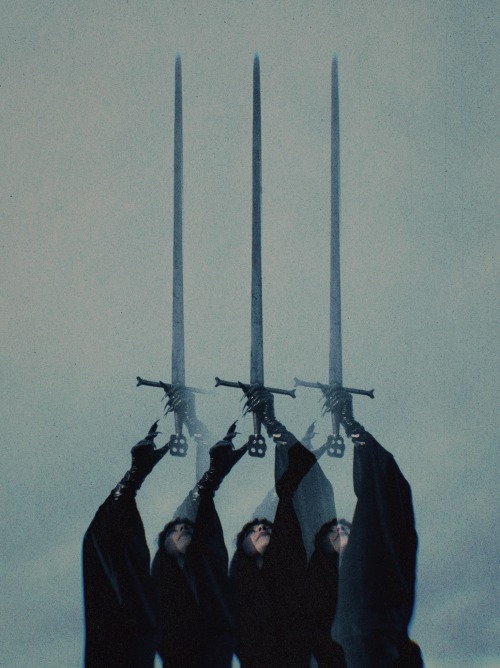Claude Paradin, Devises Heroïques, 1567



Claude Paradin, Devises Heroïques, 1567
More Posts from The-insydious and Others

The brightly lit limb of a crescent Enceladus looks ethereal against the blackness of space. This image is a composite of images taken with the Cassini spacecraft narrow-angle camera on March 29, 2017, using filters that allow infrared, green, and ultraviolet light. Credit: NASA/JPL-Caltech/Space Science Institute
Bloodborne and Brain Structure
So I just ran into the concept of “amygdala hijack” in an article about anxiety, and my brain instantly went “BLOODBORNE”, and it was not wrong. Then I dug further, and all sorts of brain parts map onto elements in Bloodborne, it’s definitely not an accident!
Amygdala hijack is when your brain starts generating overly nightmarish scenarios in response to a situation. And that’s what happens in Bloodborne! The Amygdala snatches you and puts you into deeper levels of the nightmare.
But that’s not all. It got me curious what other brain parts map onto creatures/characters, and here we go, some obvious candidates:

Rom looks like the occipital lobe, which is “the visual processing center of the mammalian brain” - she gained eyes, right!
The ascended hunter slug, is a good candidate for the hippocampus: “It has a major role in learning and memory. It is a plastic and vulnerable structure that gets damaged by a variety of stimuli.”
Thalamus is among other things responsible for “the regulation of consciousness, sleep, and alertness.” Not sure what to map it on directly, but seems relevant.
There is probably more, but I am in no place or shape to dwell further. This makes me wonder how much of Bloodborne is actually all in the Hunter’s head. Or someone’s head at any rate.
In conclusion, Rom ascended to be part of the brain, the Hunter ascended to be another part of the brain. Maybe with enough people ascending they can have at least one functioning brain between them LOL.
Using Demonic Sigils

Demonic sigils are specific types of symbols or seals that are used in various magickal traditions to represent, summon, or communicate with demonic entities. These symbols are believed to hold the essence or the power of thr demon they represent, acting as a focal point for rituals involving these entities. The use of demonic sigils dates back to ancient times and has been incorporated into numerous magickal practices and grimoires throughout history.
Historical Origins
The practice of using symbols or seals to represent demons is ancient, with roots in cultures around the world. However, the formal use of demonic sigils is most notably documented in medieval and Renaissance grimoires. These texts, such as 'The Lesser Key Of Solomon' (also known as Ars Goetia or Lemegeton), provide a catalog of demons, each accompanied by a unique sigil.
A sigil can have immense power because it's a gateway to a certain energy. It's like having a direct line to a powerful person, except that the person is a spiritual force, not constrained by the time/space continuum. The ancients knew all too well that our world is not only physical, that there are entities among us that we can't perceive with our ordinary senses, yet they can be communicated with through symbols which activate our higher intuitive faculties and open a door for their arrival.

Purpose And Use
Demonic sigils serve several purposes in magickal practices, including:
• Summoning- Sigils are used in rituals to summon demons, providing a method for the practitioner to focus their intention and call forth the entity.
• Communication- Sigils facilitate communication with demonic entities, acting as a bridge between the practitioner and the spirit realm.
• Command- In some traditions, possessing a demon's sigil gives the practitioner a degree of control, over the entity, compelling it to perform or grant requests of the summoner. Most entities will resist this type of magick and some may turn hostile. Use sigils with respect and consideration.
A sigil of a summoned demon can be utilized in various ways after the ritual. For example, by carrying it with you, placing it in a prominent place in your home, an altar dedicated to the demon, or in some cases of baneful magick, placing it near the target, burying it, burning it, etc.

Creation And Activation
Demonic sigils found in grimoires are traditionally received through mystical revelation or compiled from older texts. Modern practitioners may use these historical sigils or create new ones through various methods of sigilization, such as the rearrangement of letters from the demon's name into a symbolic design.
Activating or charging a demonic sigil typically involves ritualistic practices. These can include specific invocations, the use of ceremonial magick tools, and the creation of a ritual space. The goal is to energize the sigil and open a channel of communication with the entity it represents.
There are also techniques that can be used to create a unique sigil that connects a person with a specific demon for the purpose of attunement. Such a sigil being charged and activated to serve a single connection rather than everyone who chances upon it, can be a more powerful conduit. It is comparable to a dedicated VS a shared network.

Authoritative Texts With Demonic Sigils
Some grimoires contain extensive lists of demonic entities, their attributes, and corresponding sigils. Here are some notable texts that include information and drawings of demonic sigils:
• The Lesser Key Of Solomon (Ars Goetia, Lemegeton, Clavicula Solomonis)- Particularly the first section, known as the Ars Goetia, which details 72 demons along with their sigils and methods of summoning them.
• The Grimoire of Honorius- Attributed to Pope Honorius III, this grimoire includes sigils and instructions for summoning spirits, including demons, and is known for blending Christian and pagan elements.
• The Book Of Abramelin- Written by Abraham von Worms, this book describes an elaborate ritual known as the Abramelin Operation, designed to obtain the knowledge and conversation of one's guardian angel but also includes information on the summoning of demons as part of its broader magickal practice.
• The Pseudomonarchia Daemonum- An appendix of Johann Weyer's 'De Praestigiis Daemonum', this text lists 69 demons along with brief descriptions and is notable for its critical perspective on the practice of demonology.
• Grimorium Verum- (Latin for True Grimoire) is an 18th century grimoire attributed to one 'Alibeck the Egyptian' of Memphis, who purportedly wrote itnin 1517. Like many grimoires, it claims a tradition originating with King Solomon.
• The Munich Manuel of Demonic Magic (Codex Latinus Monacensis 849)- A 15th century grimoire, this manuscript focuses on necromancy and demonology, including sigils for summoning demons.
• The Grand Grimoire (The Red Dragon)- Known for its powerful rituals and the summoning of demonic forces, this book also contains sigils and instructions for making pacts with demonic entities.
• The Black Pullet (La poule noire)- While primarily known gor its talismans, this grimoire also includes methods for creating sigils and rings that are used to grant the user various powers, including influence over demons.
• The Sixth And Seventh Books Of Moses- These books are a collection of magickal texts that purport to describe the magick practiced by Moses, including the use of seals and sigils associated with both angels and demons.
The sigils found in these texts are often used in their original form even today. There have also been modifications and new sigils are constantly being created, especially by chaos magicians.


Anomaly
Buy artworks here [Sponsor]
@404.on.computer [bsky]


March 29, 1966 Anne Sexton: A Self-Portrait in Letters First published: 1977


“The Fairy Dance” by Karl Wilhelm (1895, oil on canvas)

Gordiart, 神
Via: https://www.instagram.com/p/DE8icU7Ing0/
-
 magicalkidland liked this · 2 weeks ago
magicalkidland liked this · 2 weeks ago -
 ubertard liked this · 3 weeks ago
ubertard liked this · 3 weeks ago -
 howlovedyouare liked this · 3 weeks ago
howlovedyouare liked this · 3 weeks ago -
 civerous reblogged this · 3 weeks ago
civerous reblogged this · 3 weeks ago -
 pitofexistentialdespair liked this · 3 weeks ago
pitofexistentialdespair liked this · 3 weeks ago -
 toad-eater reblogged this · 3 weeks ago
toad-eater reblogged this · 3 weeks ago -
 froth reblogged this · 3 weeks ago
froth reblogged this · 3 weeks ago -
 past reblogged this · 3 weeks ago
past reblogged this · 3 weeks ago -
 bluephantomm reblogged this · 3 weeks ago
bluephantomm reblogged this · 3 weeks ago -
 bluephantomm liked this · 3 weeks ago
bluephantomm liked this · 3 weeks ago -
 motleyreviewsbackup reblogged this · 3 weeks ago
motleyreviewsbackup reblogged this · 3 weeks ago -
 motleyreviewsbackup liked this · 3 weeks ago
motleyreviewsbackup liked this · 3 weeks ago -
 saiwhatchasayin liked this · 3 weeks ago
saiwhatchasayin liked this · 3 weeks ago -
 746455nara liked this · 3 weeks ago
746455nara liked this · 3 weeks ago -
 funeral-de-lacrimae liked this · 4 weeks ago
funeral-de-lacrimae liked this · 4 weeks ago -
 dog-ending reblogged this · 4 weeks ago
dog-ending reblogged this · 4 weeks ago -
 whywasvictoriouscancelled reblogged this · 4 weeks ago
whywasvictoriouscancelled reblogged this · 4 weeks ago -
 galacticpoop liked this · 4 weeks ago
galacticpoop liked this · 4 weeks ago -
 alldous reblogged this · 4 weeks ago
alldous reblogged this · 4 weeks ago -
 with-boots liked this · 4 weeks ago
with-boots liked this · 4 weeks ago -
 vintagecamping liked this · 4 weeks ago
vintagecamping liked this · 4 weeks ago -
 littlefoxpaws reblogged this · 4 weeks ago
littlefoxpaws reblogged this · 4 weeks ago -
 insertetitulo reblogged this · 4 weeks ago
insertetitulo reblogged this · 4 weeks ago -
 gravelorded liked this · 1 month ago
gravelorded liked this · 1 month ago -
 lasorciere-delau liked this · 1 month ago
lasorciere-delau liked this · 1 month ago -
 blackmetal-y-mas liked this · 1 month ago
blackmetal-y-mas liked this · 1 month ago -
 ugly-exchange reblogged this · 1 month ago
ugly-exchange reblogged this · 1 month ago -
 ugly-exchange liked this · 1 month ago
ugly-exchange liked this · 1 month ago -
 baekhito2 liked this · 1 month ago
baekhito2 liked this · 1 month ago -
 minowly liked this · 1 month ago
minowly liked this · 1 month ago -
 idrinktoxicrainwater liked this · 1 month ago
idrinktoxicrainwater liked this · 1 month ago -
 hannahhubbard4 reblogged this · 1 month ago
hannahhubbard4 reblogged this · 1 month ago -
 hannahhubbard4 liked this · 1 month ago
hannahhubbard4 liked this · 1 month ago -
 adrianhellbreaker liked this · 1 month ago
adrianhellbreaker liked this · 1 month ago -
 tymetherealtymeitself13333 liked this · 1 month ago
tymetherealtymeitself13333 liked this · 1 month ago -
 littlefoxpaws liked this · 1 month ago
littlefoxpaws liked this · 1 month ago -
 hers1rvant reblogged this · 1 month ago
hers1rvant reblogged this · 1 month ago -
 hers1rvant liked this · 1 month ago
hers1rvant liked this · 1 month ago -
 deadbeatlena liked this · 1 month ago
deadbeatlena liked this · 1 month ago -
 the-shadow-out-of-time reblogged this · 1 month ago
the-shadow-out-of-time reblogged this · 1 month ago -
 crispy-bones reblogged this · 1 month ago
crispy-bones reblogged this · 1 month ago -
 httpsifisomthembu liked this · 1 month ago
httpsifisomthembu liked this · 1 month ago -
 digitalphrenology liked this · 1 month ago
digitalphrenology liked this · 1 month ago -
 we-can-be-heroes liked this · 1 month ago
we-can-be-heroes liked this · 1 month ago -
 scottscotscuh liked this · 1 month ago
scottscotscuh liked this · 1 month ago -
 1uriarte liked this · 1 month ago
1uriarte liked this · 1 month ago -
 vanillaicebear liked this · 1 month ago
vanillaicebear liked this · 1 month ago -
 fallenangelmuse liked this · 1 month ago
fallenangelmuse liked this · 1 month ago



